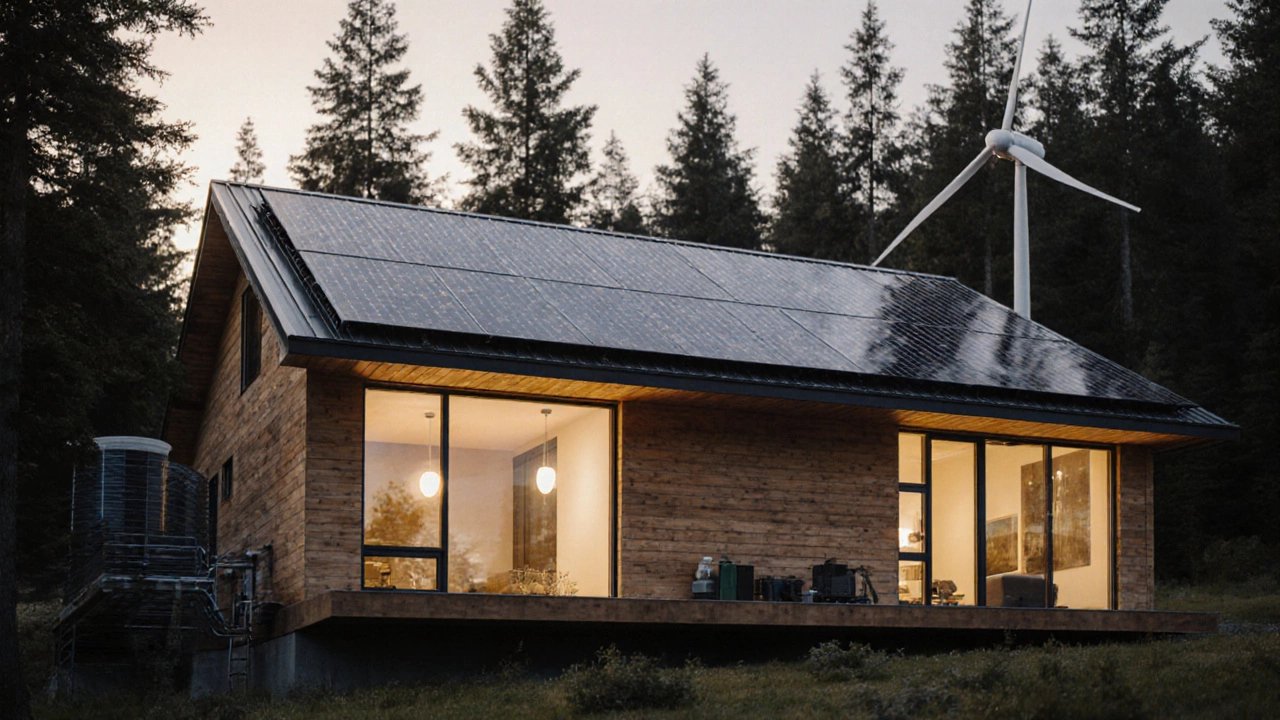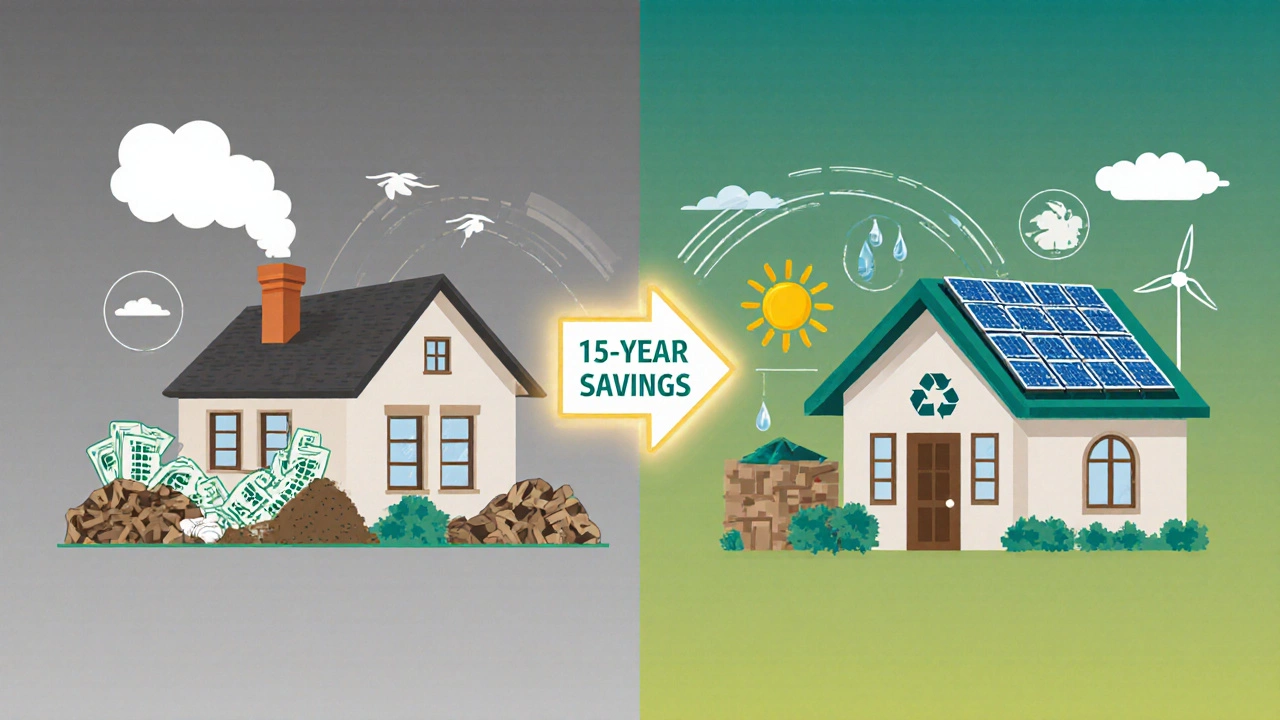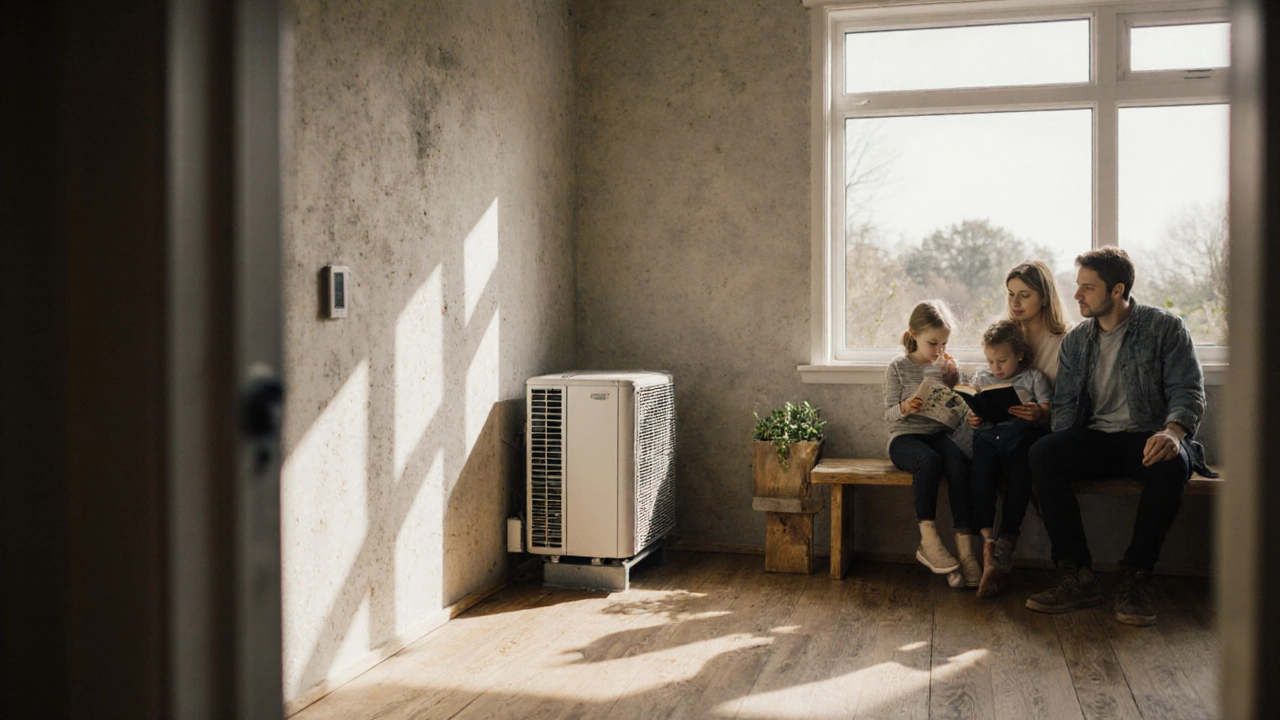How Much Does It Cost to Build a Fully Sustainable House?

Sustainable Home Cost Calculator
Calculate your customized sustainable home cost and energy savings based on your specific needs and location.
Your Home Specifications
Rebates & Incentives
Building a fully sustainable house doesn’t mean living in a treehouse or giving up modern comforts. It means designing a home that uses far less energy, produces little to no waste, and doesn’t harm the planet - while still being comfortable, safe, and beautiful. But the big question everyone asks is: how much does it cost to build a fully sustainable house?
The short answer? It depends. On where you live, what materials you choose, how big your house is, and how far you want to go with sustainability. In 2025, a typical net-zero energy home in Canada costs between $300,000 and $550,000 for a 2,000-square-foot house. That’s 10% to 25% more than a standard new build. But here’s the twist: over 15 years, many owners pay less in energy bills than they paid extra upfront.
What Makes a House Truly Sustainable?
A sustainable house isn’t just about solar panels on the roof. It’s a system. Every part - from the foundation to the light switches - needs to work together to reduce environmental impact. That means:
- Super-insulated walls and triple-glazed windows
- Passive solar design (windows facing south to capture winter sun)
- Energy-efficient HVAC systems like heat pumps
- On-site renewable energy (solar PV or small wind turbines)
- Water harvesting and greywater recycling
- Non-toxic, low-carbon building materials (like cross-laminated timber, recycled steel, or hempcrete)
- Zero-waste construction practices
Some people think sustainability means going off-grid. But most modern sustainable homes stay connected to the grid - they just produce as much energy as they use over a year. That’s called net-zero. It’s easier, cheaper, and more reliable than batteries and generators.
Where Does the Money Go?
If you’re building a 2,000 sq. ft. sustainable home in British Columbia, here’s how your budget breaks down:
| Category | Standard Home Cost | Sustainable Home Cost | Difference |
|---|---|---|---|
| Foundation & Structure | $80,000 | $95,000 | +$15,000 |
| Insulation & Windows | $25,000 | $55,000 | +$30,000 |
| Heating & Cooling | $18,000 | $32,000 | +$14,000 |
| Solar Power System | $0 | $28,000 | +$28,000 |
| Water System (Rainwater, Greywater) | $5,000 | $20,000 | +$15,000 |
| Materials (Sustainable vs. Conventional) | $120,000 | $150,000 | +$30,000 |
| Design & Certification (LEED, Passive House) | $5,000 | $15,000 | +$10,000 |
| Total | $253,000 | $445,000 | +$192,000 |
The biggest jump comes from insulation and windows. High-performance triple-glazed windows cost about $1,200 each - compared to $400 for standard ones. But they cut heat loss by 70%. The same goes for insulation: spray foam or cellulose at R-40+ costs more upfront, but slashes heating bills by half.
Then there’s the solar array. A 10kW system with battery backup runs $28,000. But with Canada’s federal rebate (up to $5,000) and BC’s Clean Energy Credit, you can knock off $7,000-$10,000. That’s a big help.
Can You Build One for Less?
Absolutely - if you’re smart about it. One couple in Nelson, BC, built a 1,600 sq. ft. net-zero cottage for $280,000. How? They used reclaimed lumber, did most of the labor themselves, and chose a simple rectangular design. They skipped the fancy smart home tech and focused on core efficiency: thick insulation, a heat pump, and solar panels.
Another trick? Build smaller. A 1,200 sq. ft. sustainable home can cost as little as $200,000-$250,000. Less space means less material, less energy to heat, and lower ongoing costs. Many people don’t need four bedrooms. A well-designed 2-bedroom, 1.5-bath home with a flexible loft space feels just as spacious.
And don’t forget modular or prefab. Companies like Modular Home Solutions and a Canadian manufacturer of prefabricated net-zero homes using cross-laminated timber and integrated solar roofs are cutting costs by building in controlled factories. Their homes arrive on-site 60% complete. That cuts labor time, waste, and weather delays - all of which add up.

What You Save Over Time
Let’s say your sustainable home costs $50,000 more than a regular one. Sounds steep? Look at the long game.
Standard Canadian homes spend $2,000-$3,000 a year on heating and electricity. A net-zero home spends $200-$400 - mostly just for the grid connection fee. That’s $1,800 saved per year. In 15 years, you’ve saved $27,000. In 25 years? $45,000.
Plus, your home likely appreciates faster. A 2024 study by the University of British Columbia found that certified green homes sold for 7%-10% more than comparable non-certified homes. Buyers are looking for lower bills, better air quality, and resilience against power outages.
And don’t forget health. Non-toxic paint, natural ventilation, and low-VOC materials mean fewer headaches, less asthma, and better sleep. That’s not on a spreadsheet - but it’s priceless.
Common Mistakes That Drive Up Costs
Not all "green" choices are smart. Here’s what trips people up:
- Over-investing in batteries: Most people don’t need them. Grid-tied solar with net metering is cheaper and more reliable.
- Chasing certifications for the badge: LEED Platinum adds $15,000-$25,000 in fees and paperwork. For most homeowners, Passive House certification gives 90% of the benefit at half the cost.
- Buying "eco-friendly" labels: Bamboo flooring sounds green, but if it’s shipped from China, its carbon footprint is huge. Local reclaimed wood is better.
- Ignoring site orientation: If your house faces north, no amount of solar panels will make it efficient. Design matters more than gadgets.
One client in Vancouver spent $12,000 on solar shingles because they looked nice. They generated 30% less power than standard panels. Regretted it within a year.

Where to Start
If you’re thinking about building, here’s a simple roadmap:
- Get a site assessment - is your land sunny? Windy? Near a water source?
- Work with a designer who specializes in net-zero or Passive House - don’t use a general contractor.
- Choose your energy system first: solar? geothermal? air-source heat pump?
- Then pick materials that are locally sourced, recycled, or low-carbon.
- Apply for rebates before you break ground - Canada’s Greener Homes Grant still offers up to $5,000 for upgrades.
Don’t wait for the perfect moment. Start small. Add insulation to your attic. Swap out old windows. Install a heat pump. Every step counts. And if you’re building new, make sustainability part of the plan from day one - not an afterthought.
Final Thought: It’s Not About the Price Tag
The cost of a sustainable house isn’t just dollars. It’s the cost of ignoring climate change. It’s the cost of polluted air, rising energy bills, and homes that break down in extreme weather.
Building green isn’t a luxury anymore. It’s the smartest investment you can make in your future - and your family’s health. The upfront cost is real. But so is the payoff: lower bills, higher comfort, and a home that doesn’t cost the Earth.
Is it cheaper to retrofit an old house or build a new sustainable one?
It depends. Retrofitting an old house to net-zero can cost $100,000-$200,000, depending on the condition. If the foundation is weak or the layout is inefficient, you’re better off building new. But if the structure is solid, retrofitting is often cheaper and greener - you’re reusing materials instead of demolishing and hauling away tons of waste.
Do sustainable homes require more maintenance?
Not usually. High-quality windows, heat pumps, and solar panels are designed to last 25-30 years with minimal upkeep. In fact, many sustainable homes need less maintenance because they’re built with durable, non-toxic materials that don’t rot, mold, or off-gas. The only extra task? Cleaning solar panels twice a year - which takes 20 minutes.
Can I get a mortgage for a sustainable home?
Yes. Many Canadian banks now offer green mortgages with lower interest rates for homes that meet Energy Star, Passive House, or LEED standards. Some lenders even allow you to borrow more because your lower utility bills mean you have more disposable income. Ask about the Canada Mortgage and Housing Corporation’s Green Home Financing program.
What’s the best material for sustainable walls?
Cross-laminated timber (CLT) is leading the way. It’s strong, renewable, and stores carbon. Hempcrete is another great option - it’s breathable, insulates well, and is made from a fast-growing plant. For budget builds, recycled denim insulation or cellulose (recycled newspaper) are effective and affordable.
Are there government rebates for building a sustainable home?
Yes. Canada’s Greener Homes Grant offers up to $5,000 for energy-efficient upgrades. Many provinces add more: BC gives $1,500 for heat pumps, Ontario has a $10,000 rebate for net-zero homes, and Quebec offers grants for solar and insulation. Check the Natural Resources Canada website for current programs - they change yearly.